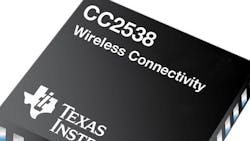This file type includes high resolution graphics and schematics.
The ZigBee Alliance has finalized its Smart Energy Profile 2.0 (SEP2) standard, which is an application for short-range radios using the ZigBee standard for wireless networking. It implements all the various features needed for home energy management.
Home-area networks (HANs) have been around for years to help consumers monitor and control their energy usage. Multiple applications have been developed using ZigBee and Z-Wave wireless as well as HomePlug power-line communications technology, but no common standard has emerged. This lack of a common standard may be one of the factors slowing the growth of HANs. SEP2 should help solve this problem.
As a spinoff and evolution of ZigBee’s original Smart Energy 1.x standard, SEP2 provides IP-based (Internet protocol) information and control for energy management in HANs using both wired and wireless technologies. It supports plug-in and hybrid electric vehicle (PHEV) charging control, deployments in multi-dwelling units like apartment buildings, interfaces for multiple energy services at single premises, and any Internet Engineering Task Force (IETF) IP-compliant protocols such as a previously announced ZigBee IP that offers IPv6 addressability.
SEP2 is the application layer for the ZigBee stack that attaches to the media access controller (MAC) layer and physical layer (PHY) of the IEEE 802.15.4 radio protocol. It is also designed to work with Wi-Fi radios and devices using the power-line communications standard of the HomePlug Alliance. It offers price and billing information, demand response and load control, and the use of most mainstream protocols like HTTP, XML, and IEC 61968.
The Texas Instruments CC2538 single-chip ZigBee solution supports SEP2 (see the figure). It features an ARM Cortex M3 core and it supports smart energy infrastructure applications with scalable memory options as well as full mesh networks with hundreds of nodes.
The Consortium for Smart Energy Profile (CSEP) was formed to test and certify the interoperability of SEP2 products. The ZigBee Alliance, Wi-Fi Alliance, and HomePlug Alliance founded the organization to ensure that all of the various wired and wireless devices for the Smart Grid ecosystem such as thermostats, appliances, electric meters, gateways, vehicles, and other devices in the home will talk to one another. Using plug fests and formal testing procedures, CSEP will assist in validating the interoperability of all devices using SEP2. For more information, contact www.csep.org.
The development and deployment of the Smart Grid for nationwide energy monitoring and control has been a slow work in progress. There are more than 120 million homes in the U.S., but only just over 40 million homes now have a smart meter that reports energy usage to one of 11 utilities. Now ZigBee and SEP2 offer a standard way to operate and communicate in a HAN. That should encourage further growth. For more details and a download of the SEP2 standard, go to www.zigbee.org.
This file type includes high resolution graphics and schematics.
About the Author

Lou Frenzel
Technical Contributing Editor
Lou Frenzel is a Contributing Technology Editor for Electronic Design Magazine where he writes articles and the blog Communique and other online material on the wireless, networking, and communications sectors. Lou interviews executives and engineers, attends conferences, and researches multiple areas. Lou has been writing in some capacity for ED since 2000.
Lou has 25+ years experience in the electronics industry as an engineer and manager. He has held VP level positions with Heathkit, McGraw Hill, and has 9 years of college teaching experience. Lou holds a bachelor’s degree from the University of Houston and a master’s degree from the University of Maryland. He is author of 28 books on computer and electronic subjects and lives in Bulverde, TX with his wife Joan. His website is www.loufrenzel.com.


